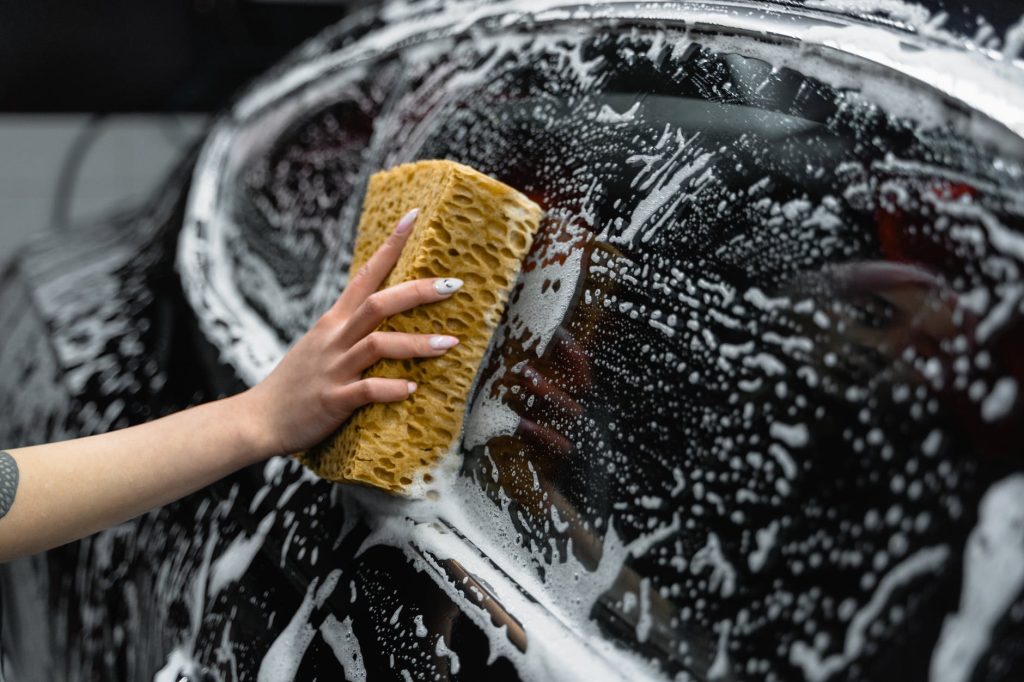Nissan released a self-cleaning car back in 2014.
It was clickbait.
Nissan never released a self-cleaning car, if we were to be clear on semantics. What they did was to apply a patent water-repellent coating on a Nissan Note. It’s old tech with a new name. This renaming led to disappointed viewers, but it also opened new doors for the future of self-cleaning cars.
So why don’t we have self-cleaning cars yet?
It’s a costly engineering problem. Your best bet would be to visit your local Mr. Wash.
When we think of self-cleaning cars, the first thing we imagine is a car that has jets that sprout water ALL over its surface, and a built-in drying mechanism, accomplished either via heat or jets of air, or a combination of both.
It’s a neat trick, and one that would eliminate the need for commercial car wash visits. But it hasn’t happened yet. From an inventor’s standpoint, this is very possible to achieve.
Too many moving parts.
If car designers were keen on making this a possibility, they’d have to copy designs from nature. The windshields already have their own water jets to help with visibility. The water supply is taken from a small canister. If you’re to clean a whole car, you’d need a bigger tank. The problem lies on where to place the tank.
How about running pipes that contain water along the spaces between the cabin and the metal sheets?
A system of hoses that run through the car’s interior would stand in as a replacement for a tank, eliminating weight issues. The drying mechanism can be installed in any number of places along the car exterior. The only problem? This makes a self-cleaning car weigh more than it really does.
While the idea may be novel, it’s impractical for a car’s efficiency – the problems will arise from storage space to the gross weight of the car. It’s simply easier to go through a commercial car wash. It’s also worth mentioning that making a self-cleaning car will take greater effort.
Hydrophobic Metals Are Expensive
So Nissan was right all along in developing a water-repellent coating. How about engineering metals to repel water? It’s not a new idea, and in fact, physicists have developed an alloy that repels water.
The physicists created the water-repellant alloy with the help of lasers. The surface of this metal is more hydrophobic than Teflon, requiring only four degrees of tilt to make the water slide away. It eliminates the need for environmentally-unsafe (and possibly health-hazardous) coating as it’s built-in on the structure.
The process of etching the nanostructures onto a metal plate takes over an hour, and is rather costly. Until we have cheaper and more efficient ways to achieve hydrophobic metals, this is definitely not an option. Hydrophobic metal plates: 0 Car wash: 1.
Making “Single-Surface” Concept Cars
It’d be easier to accomplish car cleaning if it only had a uniform, curved surface. A car with a smooth surface would only need a single sweep of water to clean it. While we have designers that make concept cars every year, the appeal of a dome-shaped car won’t sell to the public.
And even though you have this, it’s very difficult to manufacture formed metal sheets. It’s not impossible, but very costly.
If designers were to stretch self-cleaning to “sweating” cars, that would help minimize water waste. The only issue is that we don’t have cheaper means of making this a reality.
Just like how the physicists etched parallel lines onto sheet metal, it would require some intricate laser work to make a sheet metal with pores only a nanometer wide. Again, novel idea, but economically impractical.
The Verdict
Car wash companies will be here to stay for a long time. Even though people 50 years ago dreamed of flying cars that won’t have to touch dirt, air pollution is still going to rough up car paint. Car wash businesses will continue helping man travel in cleaner spaces, and it’s going to take at least a good 50 years before flying cars actually take to the skies.
